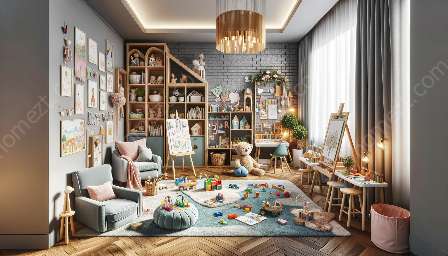Role-playing and dress-up activities hold a special place in a child's development, fostering creativity and imagination. These activities offer valuable opportunities for learning and social development, making them an integral part of playroom and nursery settings. In this comprehensive guide, we delve into the world of role-playing and dress-up, exploring their benefits, ideas, and tips for integrating them into the playroom and nursery.
The Importance of Role-Playing and Dress-Up
Role-playing and dress-up activities serve as powerful tools for children's cognitive, emotional, and social development. Through imaginative play, children can explore different roles and scenarios, enhancing their understanding of the world around them. These activities encourage creativity, problem-solving, and empathy, laying the foundation for essential life skills.
Benefits of Role-Playing and Dress-Up:
- 1. Cognitive Development: Children engage in imaginative thinking and problem-solving as they take on various roles and scenarios.
- 2. Emotional Expression: Role-playing allows children to express and process emotions in a safe, playful environment.
- 3. Social Skills: Collaborative play in dress-up activities fosters communication, cooperation, and negotiation among children.
- 4. Language Development: Storytelling and role-playing contribute to language fluency and vocabulary expansion.
- 5. Confidence Building: Children gain self-assurance and self-expression through embodying different characters and personas.
Integrating Role-Playing and Dress-Up into Playroom Activities
For playroom activities, role-playing and dress-up can be seamlessly integrated to create an enriched, imaginative environment. Consider the following tips to incorporate these activities:
- Designated Dress-Up Corner: Create a dedicated space within the playroom for dress-up costumes and props, allowing children easy access to transform into their desired characters.
- Themed Play Areas: Set up themed play areas such as a pretend kitchen, doctor's office, or construction site to stimulate imaginative play and role exploration.
- Storytelling Sessions: Encourage storytelling and role-playing sessions where children can bring their favorite characters and stories to life through dramatic play.
- Open-Ended Play Materials: Provide open-ended materials such as scarves, hats, and props, empowering children to create and improvise their own imaginative scenarios.
Benefits of Playroom Integration:
- 1. Enhanced Creativity: Role-playing and dress-up areas within the playroom inspire creativity and inventive thinking.
- 2. Cooperative Play: Children learn to collaborate and engage in shared imaginative experiences, fostering social skills.
- 3. Learning Through Play: Role-playing activities integrate educational themes and concepts, making learning enjoyable and memorable.
Nurturing Role-Playing and Dress-Up in Nursery Settings
Introducing role-playing and dress-up activities in nursery settings offers young children valuable learning experiences in a safe and nurturing environment. Consider the following strategies for incorporating these activities:
- Sensory Play Props: Provide sensory-rich props such as soft fabrics, textured items, and sensory toys to facilitate tactile exploration during dress-up activities.
- Mirror Play Area: Create a designated play area with child-friendly mirrors, allowing children to admire and express themselves as they embody different characters.
- Themed Exploration Baskets: Offer thematic exploration baskets with items related to professions, animals, or cultural costumes, encouraging role-playing and cultural awareness.
- Language Enrichment: Use role-playing activities to enhance language development by introducing new vocabulary and facilitating verbal expression.
Benefits of Nursery Integration:
- 1. Sensory Stimulation: Dress-up activities provide sensory-rich experiences, promoting tactile exploration and sensory awareness.
- 2. Self-Expression: Young children develop self-awareness and self-expression as they engage in imaginative play and role exploration.
- 3. Cultural Understanding: Role-playing activities in nursery settings introduce children to various cultures, traditions, and professions, fostering respect and inclusivity.
In Conclusion
Role-playing and dress-up activities offer a wealth of benefits for children, nurturing their creativity, social skills, and emotional expression. By integrating these activities into playroom and nursery settings, caregivers and educators can create vibrant, imaginative environments that support holistic child development. Whether through themed play areas, storytelling sessions, or sensory props, role-playing and dress-up activities enrich children’s play experiences, making learning fun and memorable.


